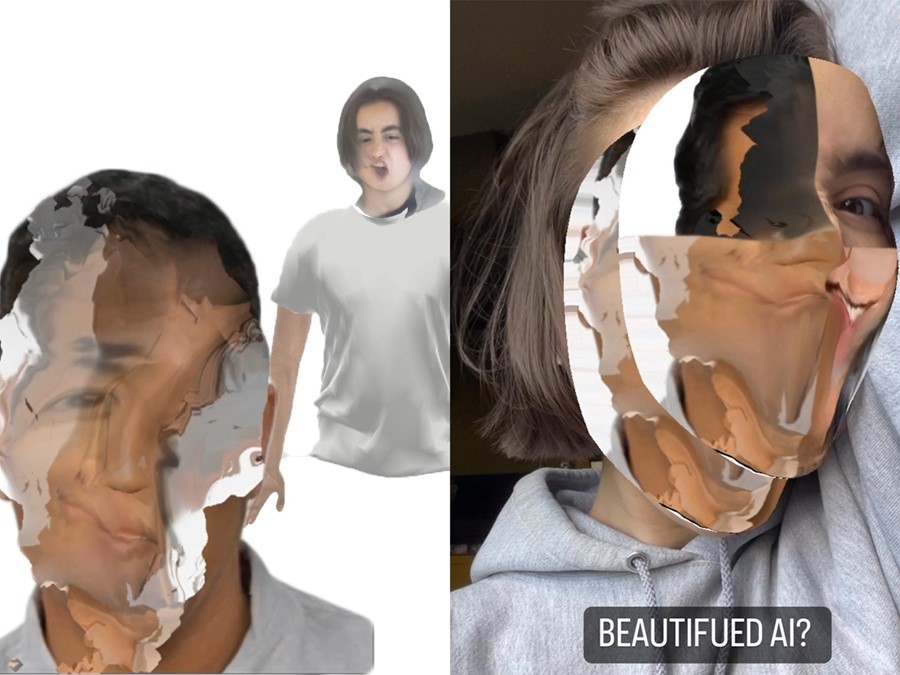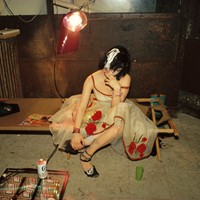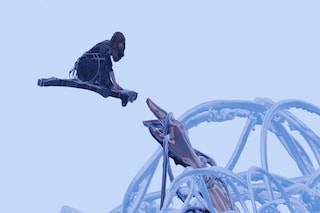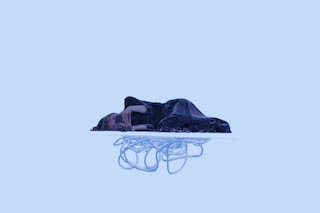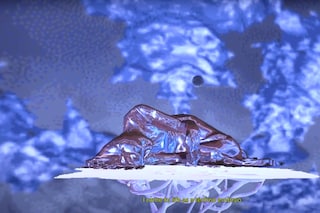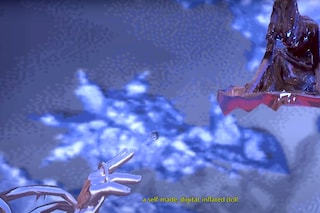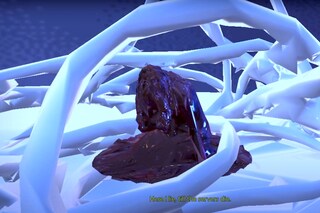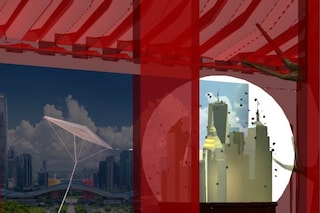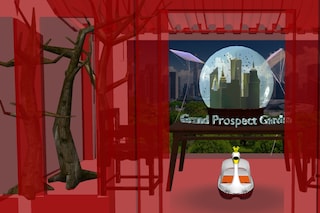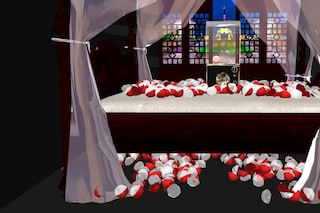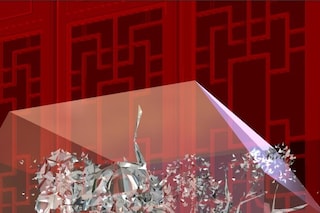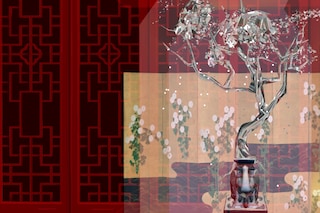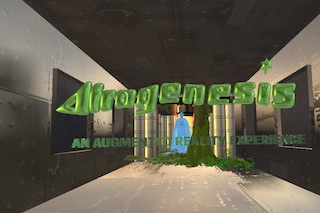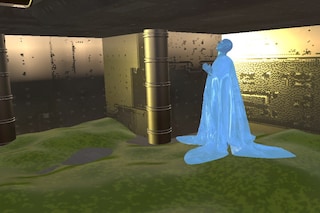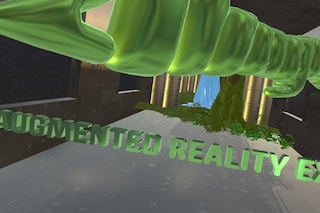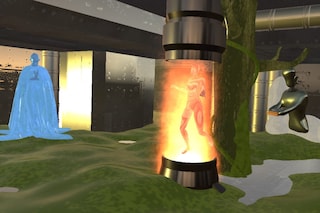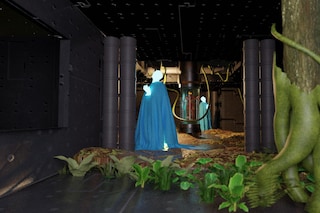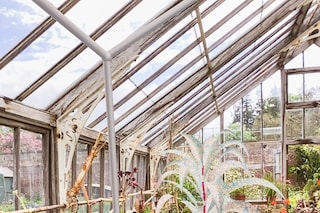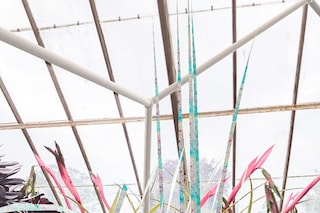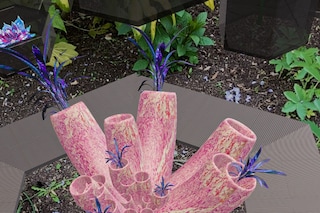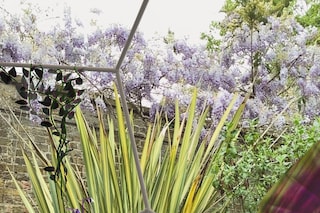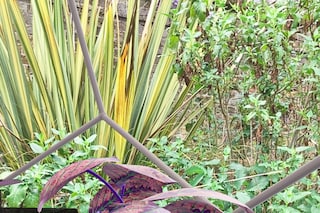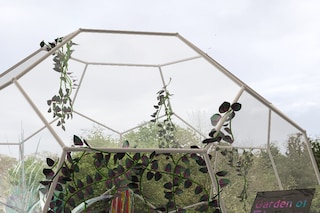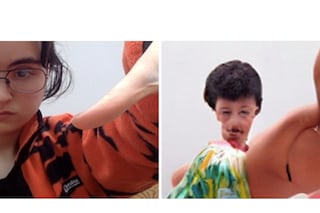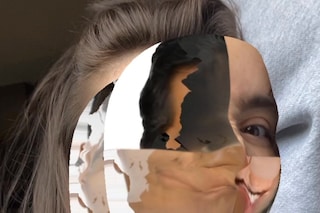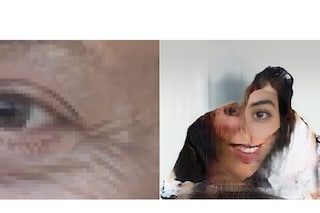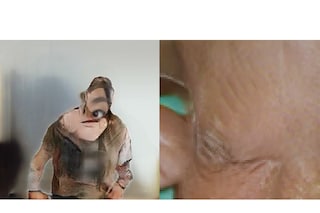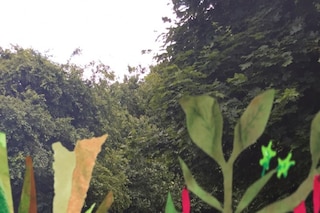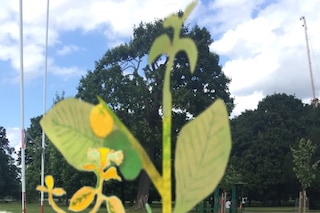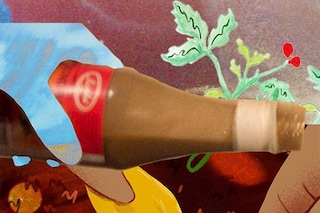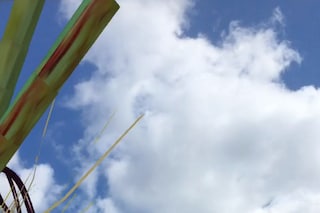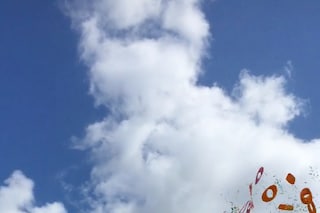Open Space at The Photographers’ Gallery has enabled six emerging young artists to experiment with augmented reality
We’re barely glimpsing the vast potential and scope of technology. As new developments in the metaverse and VR continue to expand the realms of our experience, artists are finding innovative ways to explore the seemingly limitless potential of these new worlds.
Following a series of workshops held in 2021 for emerging artists interested in working with augmented reality, The Photographers’ Gallery (in partnership with HERVISIONS curator Zaiba Jabbar), has commissioned six new augmented reality artworks for a project called Open Space.
The six chosen artists, aged between 18 and 24, have been introduced to AR tools and techniques as well as critical thought regarding AR production. Through a series of one-to-one mentoring sessions with established curators and AR artists, Open Space has supported them in the creation of six new augmented reality projects, set to debut across the platform over a period of the next six months.
While the programme launches today, debuting an AR filter created by Nella Piatek, below, we meet the next generation of digital artists featuring in Open Space.
NELLA PIATEK
London-based artist Nella Piatek is a self-described “designer, researcher, and cyberwitch” whose work is concerned with anthropological futures and sociotechnical imaginaries.
“The more I engage in conversations about the politics of the metaverse, the more I find AR increasingly intriguing.
“‘XRiS-00222’ is my first augmented reality work and I think my beginning of working with this new technology. It felt like a natural evolution that stemmed from my previous research and into cyberwitch-craft, archival practices, and the ‘digital as sanctuary’. The cyberwitch in this work came into existence as a sister to the cyberwitches present in my other works. The title ‘XRiS-00222’ is a code name for the cyberwitch’s digital capsule, an identification number to be precise.
“As designers, we can never guarantee our work will have a specific effect on our audience. I think what I try to achieve through my work is to open up discussions of what can be possible with existing systems and what alternative ways of viewing familiar technology can exist. I hope that my audience will become curious and intrigued while interacting with this work and take the time to listen to the cyberwitch’s story.”
MEITAO QU
Meitao Qu lives and works between London and Beijing. From costume to architecture, Qu’s work explores the ways in which forms of visualisation operate to stimulate our imaginations.
“‘Dreaming of Red Mansions’ is a series of AR filters presented on Twine, loosely inspired by the 17th-century Chinese novel The Story of the Stone. Accompanied by text, the audience is guided through a textureless 3D courtyard house and the filters – displayed via QR codes – act like digital portals into the fictional world. Like virtual dioramas, each filter offers a glimpse into a room that houses an assemblage of images and objects, with a looped soundscape. Combining audio-visual and text-based elements, I wanted the work to be a playful and affective experience that anyone can engage with, without prior knowledge of the book and its contents.
“I’ve worked with a variety of media in the past, but before trying out digital tools, I mostly worked with physical materials as I like being quite hands-on. It was exciting but definitely overwhelming as I was never that good with computers, and I found the transition from using your hands to a mouse or a pen tool quite frustrating.
“I think tech has enabled new ways of making and sharing that are really exciting and perplexing. It has brought ‘art’ out of its old contexts into new arenas, such as the world of video games. It has also expanded how works can be distributed and experienced, broadening the scope of the audience. But at the same time, it has created chaotic conditions for the art object as a commodity, as we’ve seen in the exploding market for NFTs. In any case, I think tech and art are deeply entangled and will continue to affect one another in ways that are both freeing and limiting.”
SARAH EJIONYE
Filmmaker, photographer, and CGI artist Sarah Ejionye is currently studying a BA in Fashion Photography at the London College of Fashion where her work focuses on the lives, culture, and voices of women of colour in her photographs and films. Ejionye is also a member of Riot Soup, an art collective that seeks to encourage diversity and representation in the arts.
“‘Afrogenesis’ is an AR world filter which transforms your surroundings into a sci-fi spaceship environment. In combining elements of a jungle atmosphere, eerie humanoid figures, and spacey ambient sounds, the aim is to create a feeling of being transported to another dimension, an otherworldly pocket of space and time.
“Before working with AR, I mainly worked with analogue photography, video, and had begun to experiment with 3D software – mainly Blender – after my course at uni introduced a new media unit in second year. From there, I became interested in alternative forms of image-making, which eventually drew me to augmented reality. Alongside the visuals, sound artist Dominic Waterfield made the filter feel immersive with unique space-tinged sound effects, and graphic designer Daniella Chukwuezi created a futuristic logo and promotional materials for the project.
“The work process was entirely different to what I’m used to. As a photographer, it’s quite structured… you come up with a concept, plan ahead of time as much as possible, spend a day or more doing a photoshoot, then spend time editing afterwards. With augmented reality it’s a constant back and forth. Your idea needs to take into consideration what is actually possible with currently available technology, creating something that is both unique and user friendly. I’’d often find myself creating a version, having people test it and receive feedback, then going back and making adjustments. It’s a lot of trial and error really. But it felt very exciting, and one experience I’d always lacked with photography was a sense of involvement with the audience. With AR, the viewer is essentially experiencing the artwork rather than just looking at it.”
GEORGIA JANES
Georgia Janes is a Kent-based photographer whose work contemplates the shifting landscape between technology, nature, and art.
“I mainly worked in photography, mixed with design and illustration. I feel most inspired when layering elements of different mediums together, questioning the boundaries between them and seeing how far I can push the ‘rules’ of what photography is.
“‘Garden of Elowan’ is an immersive AR greenhouse, home to a collection of speculative, cyborg-botany-inspired plants. The project imagines a not-so-distant future in which the natural world has fused with digital technology, and life is evolving beyond the physical.
“Being a walk-through piece, the work uses both digital screens and the visitor’s direct surroundings to fully come to life, so it becomes a sort of bridge between the two worlds. It’s an exploration of how we experience virtual and physical space and the role technology plays in this. My main goal with the work was to make people look at the natural world around them with a renewed sense of wonder and reflect on the way technology might impact this in the future.
“Working with AR helped me build a more multidimensional perspective of art and the multitude of ways you can bring an idea to life. I also found it made me think more concisely about exactly the story I wanted to tell and how.”
LEDA SADOTTI
Leda Sadotti is an artist working in 3D modelling and creative programming, now using AR to explore their interest in digital waste and the implications of our digital footprint.
“‘Beautified AI’ began as an inquiry into catfishing online profiles and debating the rights of AI-generated forms. This progressed into researching practices of synthetic imaging technologies where the process is discrete and purposely convoluted. I was heavily influenced by the conversations I had with a GDPR and wider data protection lawyer, who presented the impact of digital autonomy and the broader implications of our online footprints. Here, I’m speculating the impact of fabricated internet user profiling, forming these AI-generated portraits into complex, digitally woven live beings.”
ALEXIS PARINAS
Alexis Parinas is a London-based artist whose work is rooted in exploring and archiving Filipino food traditions and rituals as well as other cultures and stories from Ilocano diaspora in the UK.
“‘Sawsawan’ is an AR world interactive filter that pays homage to the dipping sauce culture integral to Filipino food culture. This interactive filter tells a story of some of the ingredients used in the different sawsawan, from the growth of specific food plants, to the food’s preparation, and the tasting of the food.
“It takes what Filipino food writer Doreen Fernandez calls a ‘galaxy of flavour-adjusters’ to conjure a distinct, expansive, and timeless world of colour and bloom. The user is invited to savour the sawsawan on their journey from the garden to the galaxy.
“This project forms a part of ‘Boggoong, Britain’, an ongoing personal body of work rooted in exploring and archiving Filipino food traditions and rituals as well as other cultures and stories from Ilocano diaspora in the UK. It makes use of personal archives, stories, accounts, and memories, recorded and unrecorded histories, and speculations and imaginings of different futurities.”
Visit The Photographers’ Gallery website for information on the Open Space programming. Tune into The Photographers’ Gallery Instagram for a live conversation between Nella Piatek and curator Zaiba Jabbar at 7pm July 4 2022.
